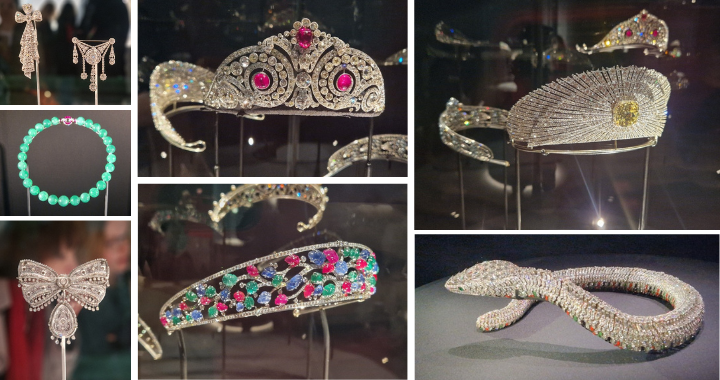Where do I begin? How can one describe in a few words the magnificence that is this exhibition. Though a bit crowded (to be expected) it was still as jaw dropping as the Paris exhibition, I had the delight of seeing some 15 years ago.
The exhibition’s curators have chosen to take us through time, continent, through to watches and finish with a bang in the form of tiaras, both antique and modern. I will therefore endeavour to give you a tour in the same manner.
The earlier pieces from the beginning of the 20th Century are, naturally, inspired by the times in the shape of Belle Epoque garlands, bows and drapes.

The Manchester tiara was commissioned by the Dowager Duchess of Manchester who supplied Cartier with the 1,513 diamonds “for a design inspired by 18th century French architecture and ironwork. Born in NY from wealthy Cuban-American parents […] married into British aristocracy exchanging her wealth for a title.” It is set with diamonds and paste, mounted in silver and gold as was customary before platinum took over the jewellery industry by storm a few years later. This kicked off the Art Déco period.
This particular tiara was accepted by the HM Government in lieu of inheritance tax and allocated to the Victoria & Albert Museum, as were quite a few pieces found in this exhibition.
Other pieces of the era include these diamond-set bows, lace ribbon brooch and stomacher, all dating from 1909-1912, mounted in platinum and set with diamonds.


This tiara was made by Cartier in 1912, commissioned by Baron Pierre de Gunzburg (French banker and philantropist). It is an exquisite example of exceptionnal savoir-faire. This tiara is made of carved rock crystal (colourless quartz) and overlaid with diamonds.

Cartier also perfected the craftmanship of more “practical” pieces such as this perfume burner. Made in 1907, it is set with aventurine quartz, guilloché enamel, sapphires and silver gilt. The following year they created this desk clock on inkstand.

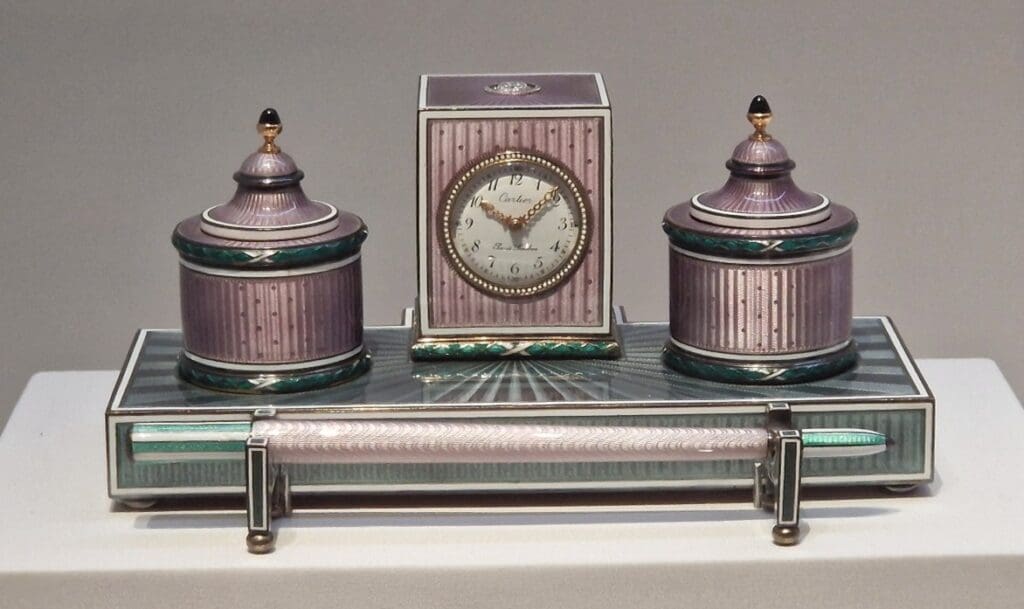
It is similarly-set with guilloché enamel, diamonds, sapphires, silver, gold, platinum and silver gilt.
Three other wonderful examples of guilloché enamel are these three pieces:



As we move in time, so do we move geographically. With long travels becoming more “common”, came new discoveries and new combinations of styles and texture, such as this Chinese Vanity case created in 1928.


Other far away places include Egypt, put on the map with the discovery of Tutankhamun’s tomb in 1922.
These new designs, step away from fluid lines and nature-based motifs, giving way to geometric design as clean lines, contrast and new colours.
This is the Art Déco movement which ‘cast aside the dictates of the past’, says decorative arts historian Melissa Gabardi. Art Déco jewels were sleek and bold, characterised by sharp edges and regularity of surface, line and volume. Unorthodox combinations of stones were introduced, with many designs combining natural materials such as onyx, emeralds, rubies, jade, silver, ivory, lapis and rock crystal with manufactured ones such as plastic and glass.
It is no secret that this is my favourite period when it comes to jewellery design.
The below pieces illustrate this daring combination of semi-precious and precious gemstones, resulting in some magical design by the luxury brand.


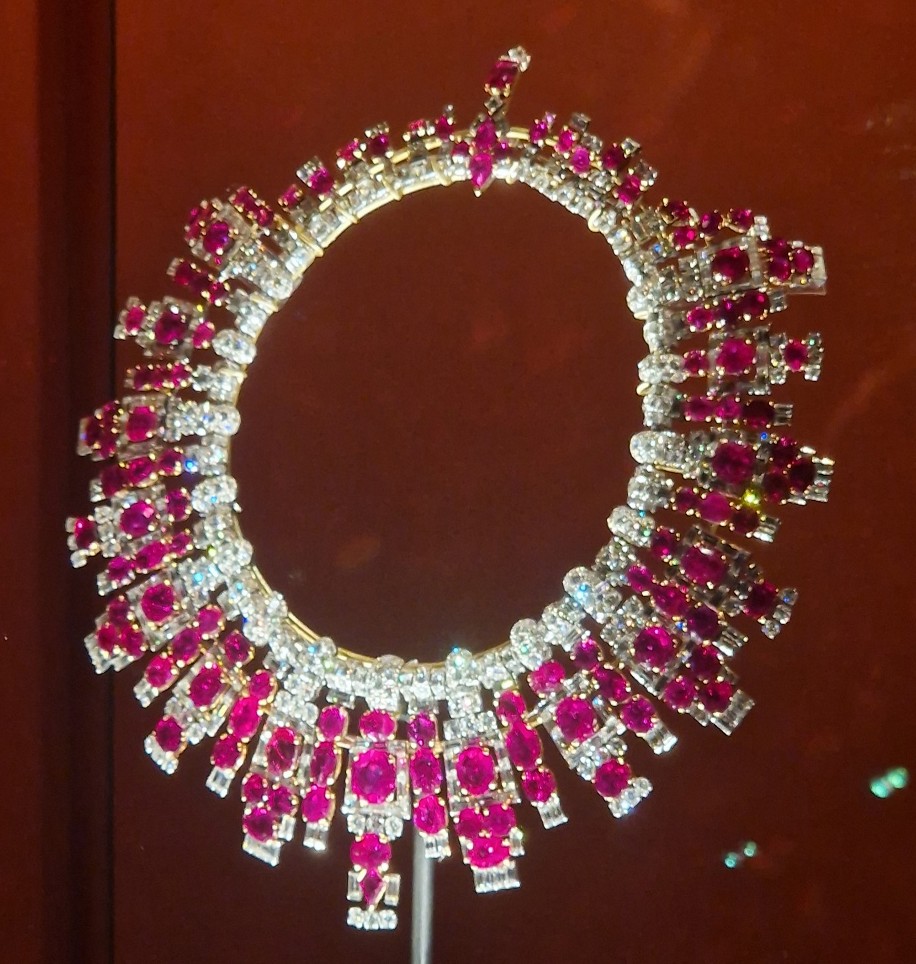
Renewed interest in Egyptian, Chinese and Japanese art offered European artists a new source of stylistic motifs. They adapted decorative elements particular to Asian jewellery, such as jade, coral, enamels, lacquer and pearls. Designs ranged from exact copies of dragons, pagodas and Chinese characters, to more liberal interpretations of Asian themes.
Keeping with the use of different materials and gems, the Cartier exhibition delighted us with a selection of Tutti Frutti jewels.
At the time of Art Déco jewellery creation, Jacques Cartier was running Cartier London and would return from his many far away travels with the most exquisite gems. These stones could be carved or made into cabochon. Cartier was the first to create these new colour and gem combinations and in the 1970s the style was named Tutti Frutti.
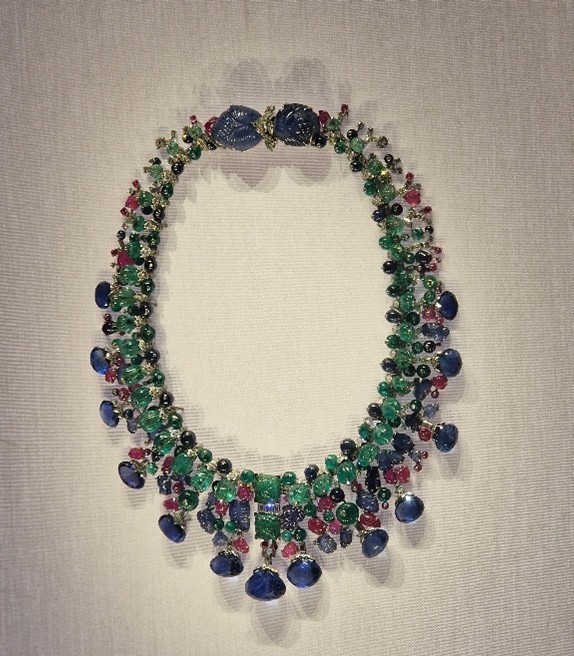
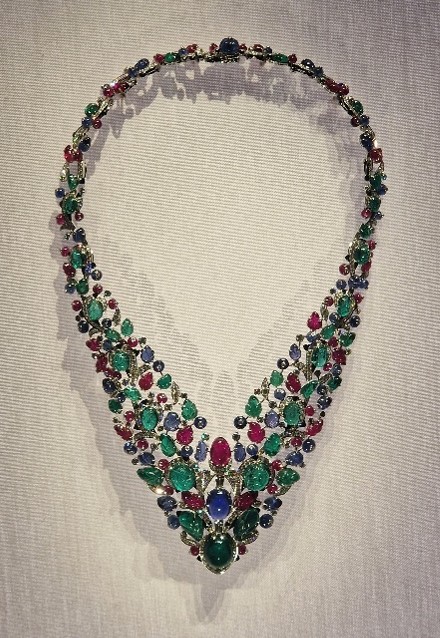

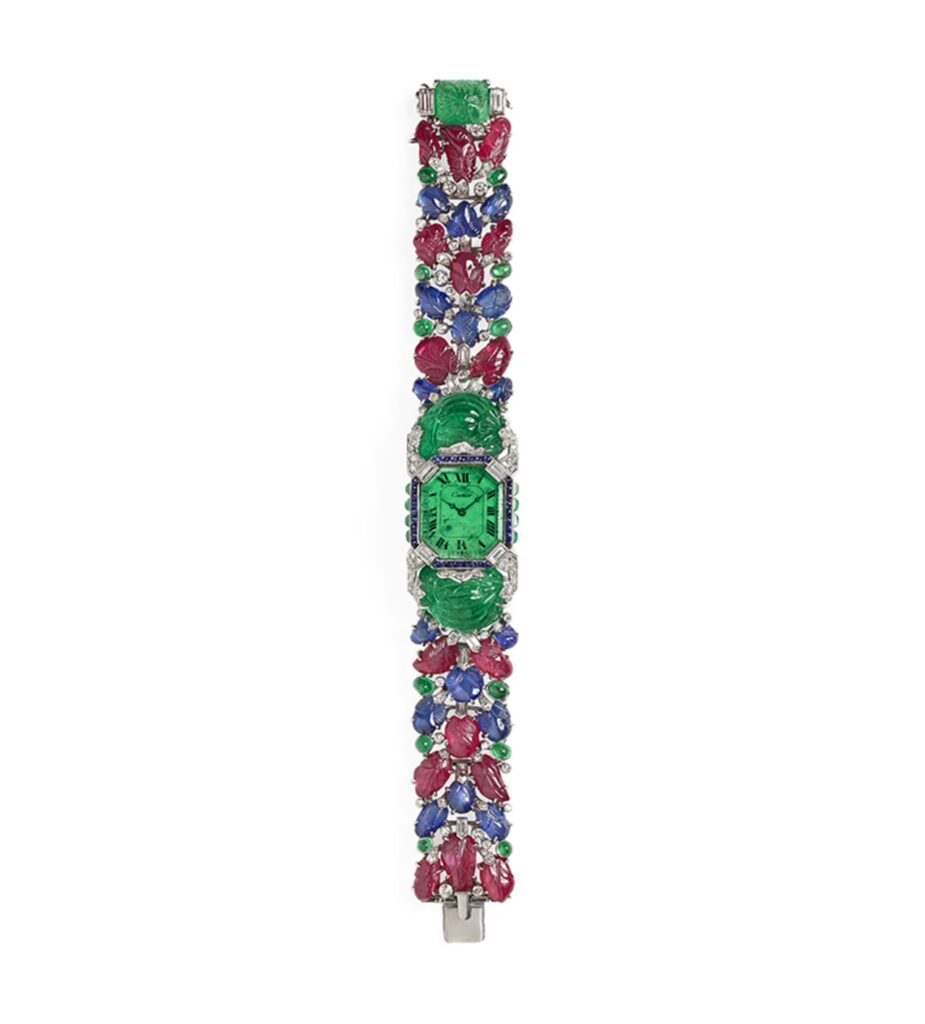
The daring and striking colour and gem combination expands to other gems such as quartz in this handcuff bracelet made of amethyst and citrine.

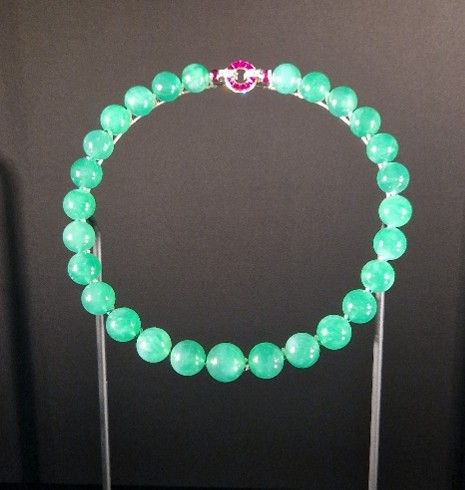
Jade and ruby seemed the perfect alliance of West meets Far East in this sublime necklace made in 1934.
The exceptional colour and translucency of these matching 27 jadeite beads make this necklace one of the finest jade jewels ever made. In 1933, Alexis Mdivani, husband of American heiress Barbara Hutton, brought these beads to Cartier to add a diamond clasp, which Hutton swapped the following year for the current ruby mount.
This necklace now belongs to the Cartier collection along with several other pieces presented at the Victoria & Albert Museum. Over the years, private owners have sold their heirlooms and Cartier has been very pro-active in buying back all of their most prized pieces.
A few have the extraordinary chance of owning exquisite pieces such as this diamond and sapphire sautoir made in 1911. It is set with a 35.13 carat star sapphire and is part of a Swiss collection. The sapphire in the piece beside it, weighs 478 carats and was made in 1913. It belongs to the Qatar Museum.
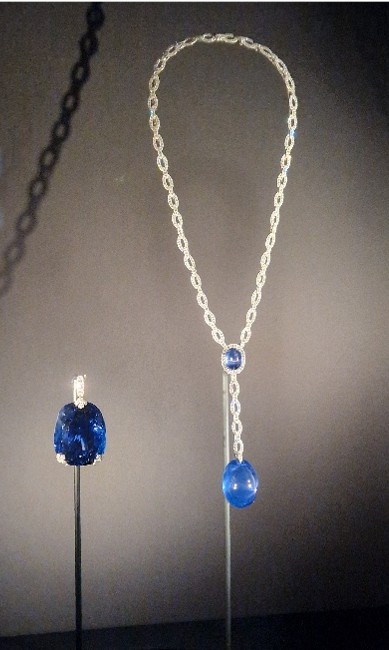
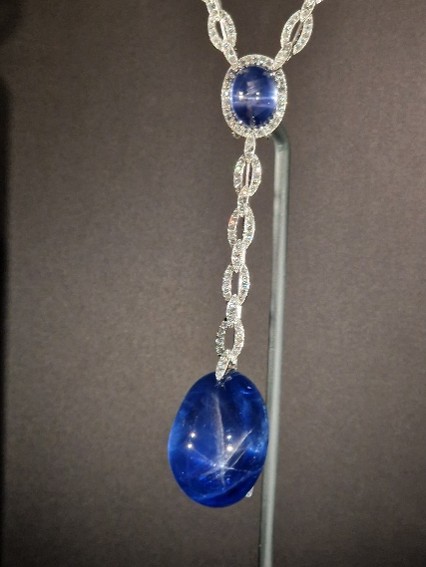
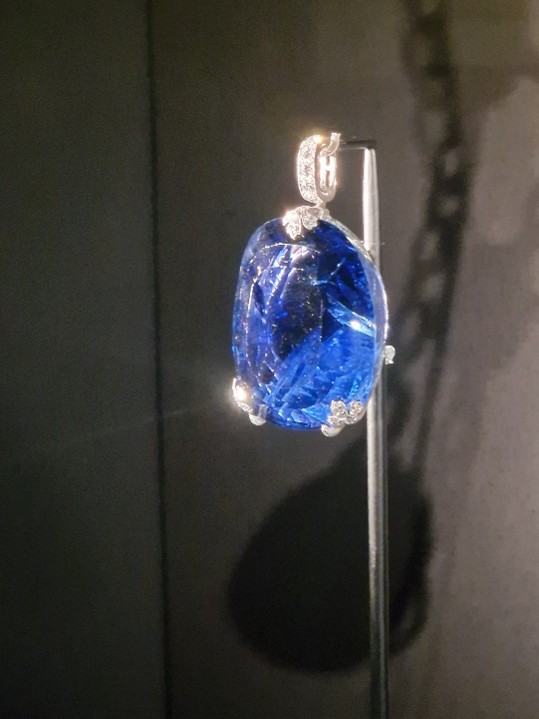
As we leave the room presenting some of the most spectacular gems, we step into the world of clocks and watches.
My favourite piece was this Mystery clock made in 1956 set with a single piece of smokey quartz.
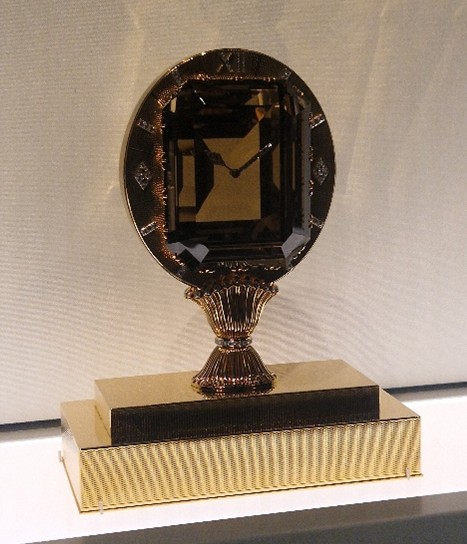

As we step away from the more “wearable” we enter the last room dedicated to tiaras.
The Sun Tiara made in 1907, set with a Fancy Intense Yellow diamond weighing 32.58cts, part of the Al Thani collection.
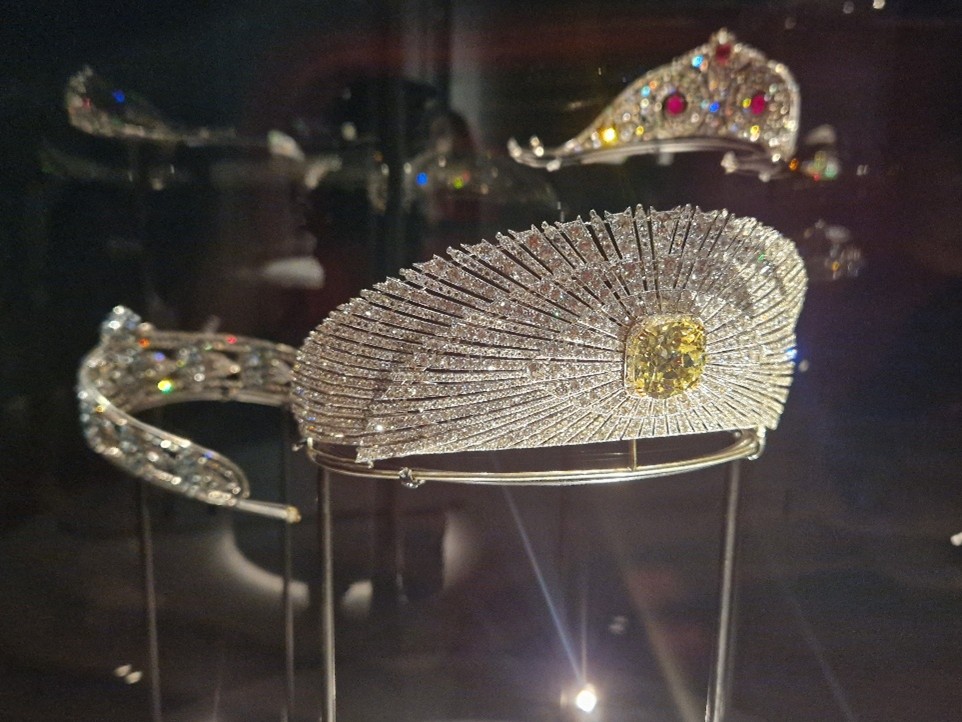
This tiara is set with diamonds and synthetic rubies. It now belongs to the Victoria and Albert Museum, after being allocated by HM Government in lieu of inheritance tax. The design and stones were supplied to Cartier by Alexandra Calvocoressi-Comnène, who was to wear it for her wedding to Robert Everts in 1913.
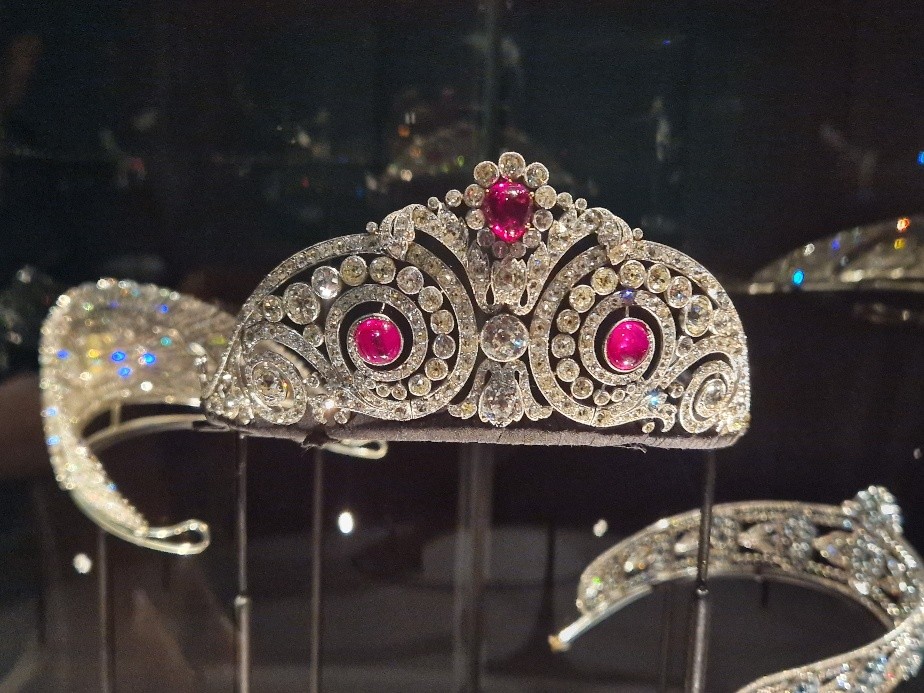
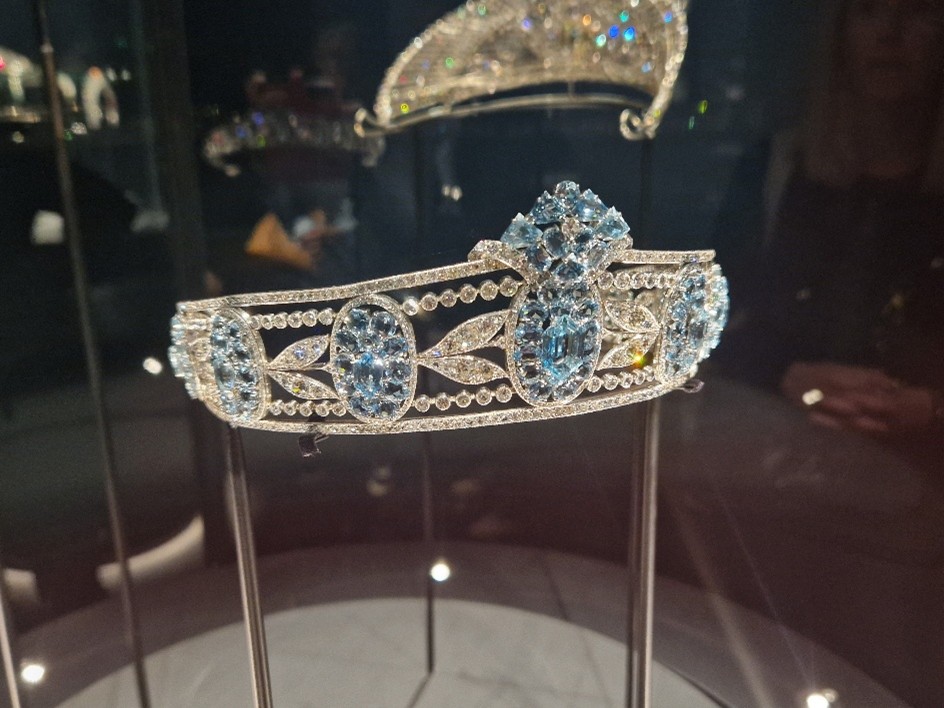

Tutti Frutti is still in demand as does this tiara prove. Made in 2018, it belongs to a private collection.
The above pieces are but a snippet of the wonderful creations over the last 100 years by Cartier. When I am fortunate enough to handle period pieces by this unique brand, I am reminded that each one of them has been carefully designed, curated, set with stones flown from the other side of the world, from sometimes perilous countries and nothing should be taken for granted when admiring extraordinary artwork, in whatever shape or form it may come.
I hope this preview has given you an appetite to discover the exhibition in its entirety. Hurry, few tickets remain available!
Other highlights to discover include:

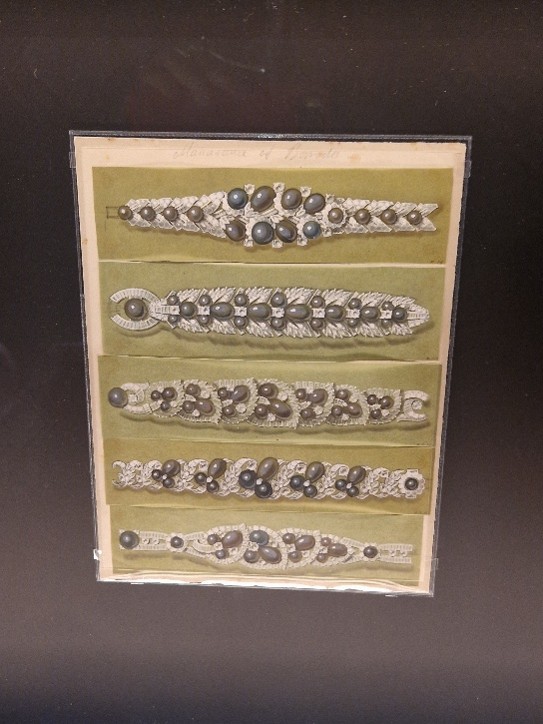
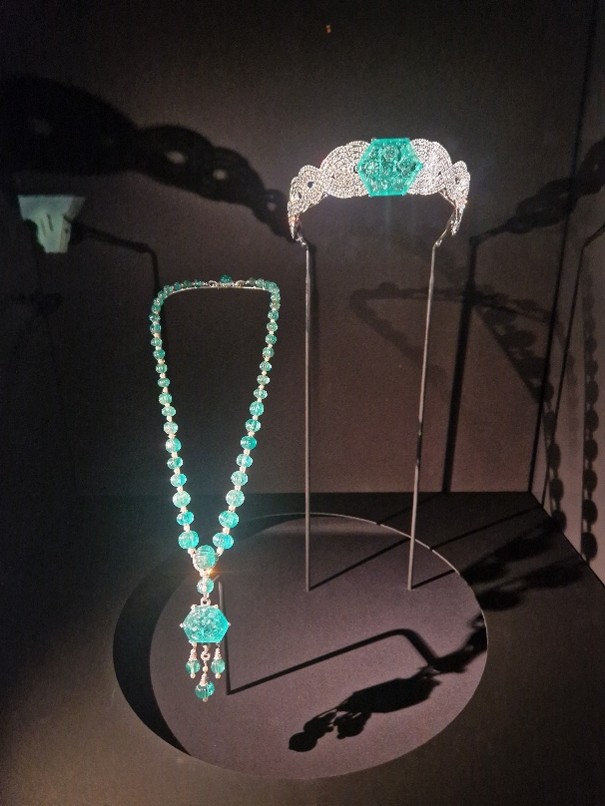
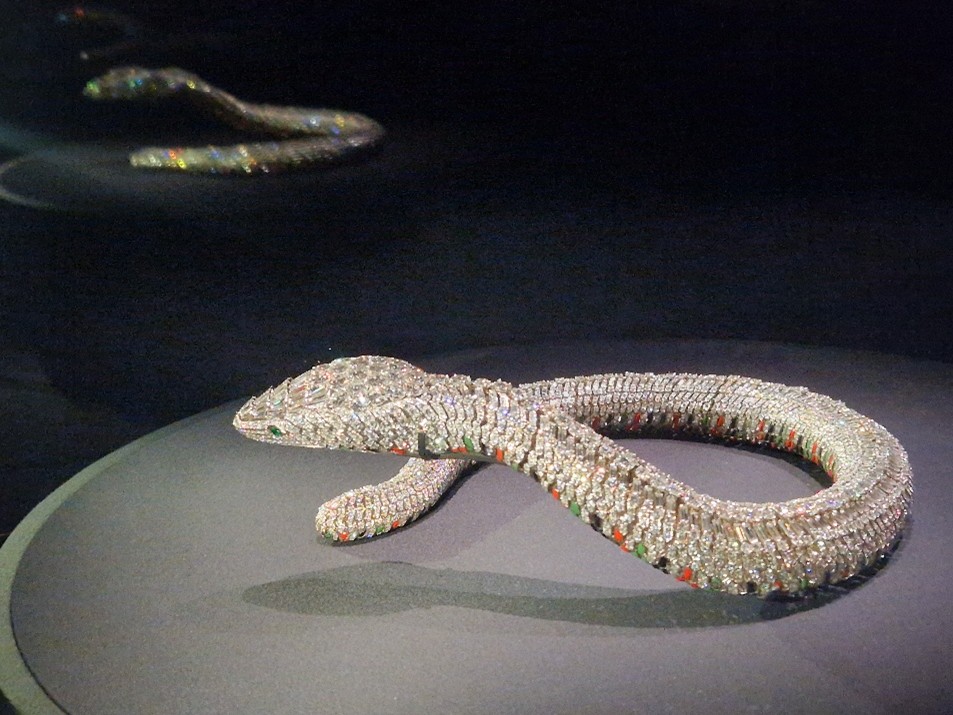
Aurélia has over twenty years’ experience in the auction industry. She started her career in Business Development and Client Services at Christie’s and Sotheby’s Paris.
- Aurélia Turrall#molongui-disabled-link
- Aurélia Turrall#molongui-disabled-link
- Aurélia Turrall#molongui-disabled-link
- Aurélia Turrall#molongui-disabled-link






